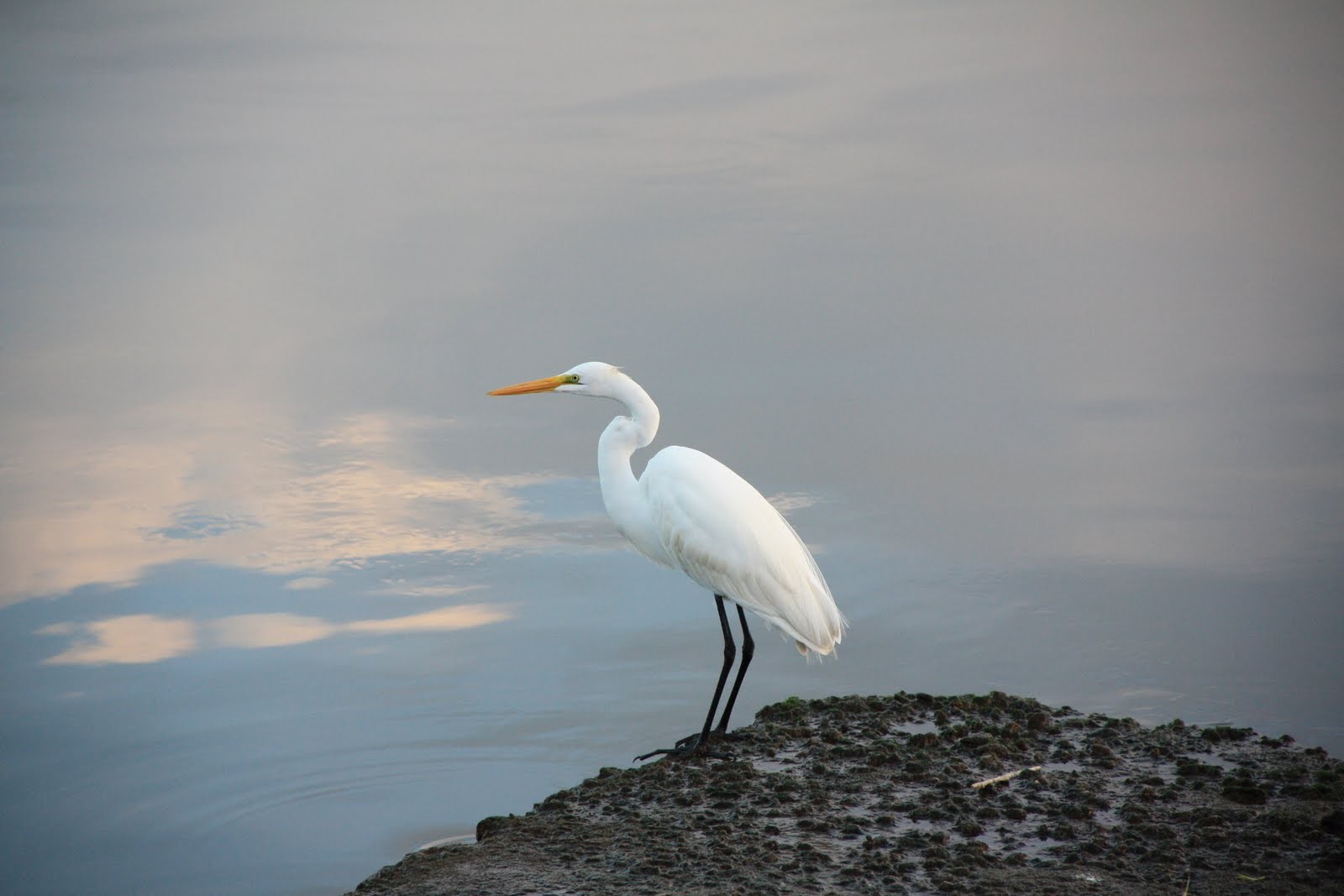Great Egret
A species of Great herons, Also known as Common Egret Scientific name : Ardea alba Genus : Great herons
Great Egret, A species of Great herons
Also known as:
Common Egret
Botanical name: Ardea alba
Genus: Great herons
Content
Description People often ask General Info
 Photo By Adrianoflorianopolis , used under CC-BY-SA-4.0 /Cropped and compressed from original
Photo By Adrianoflorianopolis , used under CC-BY-SA-4.0 /Cropped and compressed from original Description
These tall birds are quite distinctive with their bright white feathers, black legs, and orange beaks. Great Egrets live near both fresh and saltwater, nesting high in trees to protect their eggs from predatory mammals. They are colonial nesters, living in large groups (colonies), and they find the majority of their food in the nearest body of water.
Size
94 - 104 cm
Life Expectancy
23 years
Nest Placement
Tree
Clutch Size
1 - 6 eggs
Incubation Period
1 - 2 broods
Number of Broods
23 - 27 days
Nestling Period
21 - 25 days
Feeding Habits
Great Egret's diet consists mainly of small fish, amphibians, reptiles, birds, small mammals, and various invertebrates. Great Egret typically hunts in shallow waters, spearing prey with its sharp bill by standing still or slowly stalking in marine, freshwater, and brackish environments.
Habitat
Great Egret are typically found in diverse wetland environments, including marshes, ponds, shorelines, and mud flats. These birds favor low-altitude areas with ample water sources, thriving in climates that range from the tropical to the temperate. Vegetation in these habitats varies from dense trees and shrubs, where they form breeding colonies, to open landscapes that facilitate foraging. During migration and wintering, great Egret utilize similar wetland areas for stopover and residence, demonstrating adaptability to both freshwater and saline aquatic ecosystems.
Nest Behavior
Males choose display areas and begin nest construction, which both sexes may finish. Great Egret doesn’t reuse old nests, build afresh annually, and exhibit care throughout the breeding season—egg-laying to fledging.
Nest Characteristics
Great Egret typically nest up to 100 feet high, often above water, in trees or shrubs like redwoods or mangroves. Their nests are up to 3 feet across, made from sticks and twigs, and lined with pliable materials forming a cup.
Dite type
Piscivorous
People often ask
General Info
Feeding Habits
Bird food type
Sounds
Call
Recording location: Brazil
Call
Recording location: Mexico
Behavior
Great Egret exhibits a poised and deliberate manner while foraging, primarily feeding on fish and other aquatic prey through a method known as 'still hunting'. These birds wade through shallow waters, waiting silently before striking swiftly with their sharp bill to capture their prey. As a daily routine, they are active during the day, with periods of resting and preening to maintain their striking white plumage. The social structure of great Egret is complex; they are solitary foragers but come together during the breeding season to form colonies. Their interactions with the habitat include building sturdy platform nests in trees or shrubs near water bodies. Remarkably, during courtship, great Egret displays dramatic plumage and engages in elaborate mating rituals unique to its species. Juveniles show intense sibling rivalry, where aggression can lead to fatal outcomes. The species' adaptability in various wetland habitats, combined with their elegant flight and distinctive breeding behaviors, distinguish great Egret from other birds.
Distribution Area
The great egret is generally a very successful species with a large and expanding range, occurring worldwide in temperate and tropical habitats. It is ubiquitous across the Sun Belt of the United States and in the Neotropics. 
Species Status
In some parts of the southern United States, its numbers have declined due to habitat loss. Nevertheless, the species adapts well to human habitation and can be readily seen near wetlands and bodies of water in urban and suburban areas. It is one of the species to which the Agreement on the Conservation of African-Eurasian Migratory Waterbirds (AEWA) applies. 
Scientific Classification
Phylum
Chordates Class
Birds Order
Pelicans and Relatives Family
Herons Genus
Great herons Species
Great Egret